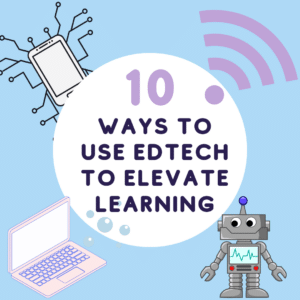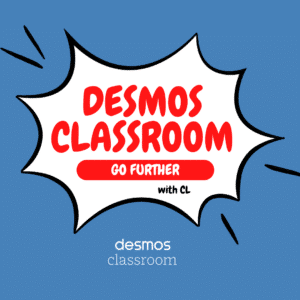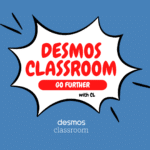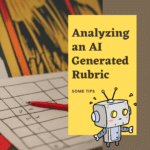In today’s fast-paced digital landscape, it is important to prepare students to be proficient with technology. However, “paperless is a pedagogy.” Focusing solely on replacing traditional resources with digital ones risks overlooking the true potential of EdTech. Instead, we should shift our focus towards leveraging educational technology to elevate learning experiences for our students. By harnessing the power of EdTech, we can promote collaboration, critical thinking, creativity, and personalized learning—ultimately fostering a more engaging and dynamic classroom environment. Consider how to use EdTech to elevate learning.
10 Ways to Use EdTech to Elevate Learning
1. Gamify Your Classroom
Transform your lessons into interactive and engaging games that motivate students to learn. Try using platforms like BookWidgets, Quizizz, or Breakout EDU to create customized quizzes, puzzles, and challenges that encourage collaboration and critical thinking.
2. Embrace Collaborative Learning
Leverage the power of Google Workspace (formerly G Suite) to promote collaborative learning. Encourage students to work together on shared documents, presentations, and spreadsheets, fostering teamwork and communication skills in real-time.
3. Personalize Learning Experiences
Use digital tools like EdPuzzle or PearDeck to tailor lessons and assessments to individual student needs, preferences, and learning needs. Offer a variety of resources, activities, and support to ensure that each student can thrive.
4. Encourage Multimedia Creativity
Incorporate multimedia tools like Canva, Adobe Spark, or Google Slides to give students the opportunity to express themselves creatively. By designing visual presentations, infographics, or short videos, students can enhance their understanding of complex concepts and develop essential digital skills.
5. Foster Digital Citizenship
Teach students about digital citizenship and internet safety using resources like Common Sense Education. By promoting responsible online behavior, you’ll empower students to become respectful and informed digital citizens.
6. Engage in Authentic Assessments
Incorporate project-based learning and authentic assessments that challenge students to apply their knowledge and skills to real-world problems. EdTech tools like free Microsoft Flip (formerly Flipgrid) can help facilitate the sharing and assessment of these projects.
7. Create Interactive Learning Materials
Design engaging and interactive learning materials using tools like Genially, or Book Creator. By offering interactive content, you can stimulate student interest, increase comprehension, and promote active learning.
8. Enhance Accessibility and Inclusivity
By using tools like Read&Write, Microsoft Immersive Reader, or speech-to-text applications, you can make your classroom more accessible and inclusive for students with diverse learning needs. These tools help break down barriers by providing support for reading, writing, and comprehension.
9. Provide Timely and Meaningful Feedback
Leverage EdTech tools like Google Classroom, Mote, or Peergrade to streamline the feedback process. These platforms allow you to provide real-time, personalized feedback on student work, fostering growth and improvement. By incorporating audio, video, or text-based comments, you can communicate more effectively and address individual student needs.
10. Support Student-Centered Learning
Use tools like Padlet or Wakelet to create collaborative digital spaces where students can share ideas, resources, and questions related to their learning. By encouraging student-centered learning, you can empower students to take an active role in their education and drive their own inquiry and exploration.

Keep Learning and Growing
Finally, commit to ongoing professional development to stay up-to-date with the latest EdTech trends and best practices. Participate in webinars, attend conferences, or join social media communities like Alice Keeler’s Teacher Tech to expand your knowledge and skills.
Students at the Center of Decision Making
By leveraging EdTech in these 10 ways, you can create engaging and meaningful learning experiences for your students. The key to successful technology integration is to keep students at the center of your decision-making and continuously adapt your teaching to best serve their needs.
- Remote Learning Strategies Using Jamboard by @amyschultz77 @kristen_slechta
- EdTech Tools
- Google Classroom: EdTech Challenge
- What Makes EdTech Engaging?
- Email Each Student a Note
-
10 Ways Teachers Can Unleash the Power of Appsheet
AppSheet lets teachers build their own apps without code! Here are 10 ways to use AppSheet for teachers for custom classroom solutions.
-
CTRL L: Leveling Up Student-Centered Learning with a Simple Shortcut
The simple shortcut Ctrl+L might seem insignificant, but it can be a powerful tool in a student-centered classroom.
-
Chrome for the Classroom: Essential Updates Every Teacher Should Know
Chrome is always improving. If you use Chrome for the classroom you will want to check out these essential updates.
-
30 Keyboard Shortcuts That Teachers Need
The secret to feeling more confident on the computer is keyboard shortcuts! Here are 30 Keyboard Shortcuts That Teachers Need
-
Hide All Tabs – Google Sheets
Have a lot of tabs in your Google Sheets spreadsheet? Here is how to hide all tabs at once, quickly.
-
Transform Your Lessons: The Power of Desmos Classroom Computation Layer
Take Desmos Classroom even further with the computation layer. Customize your lesson with the CL.















